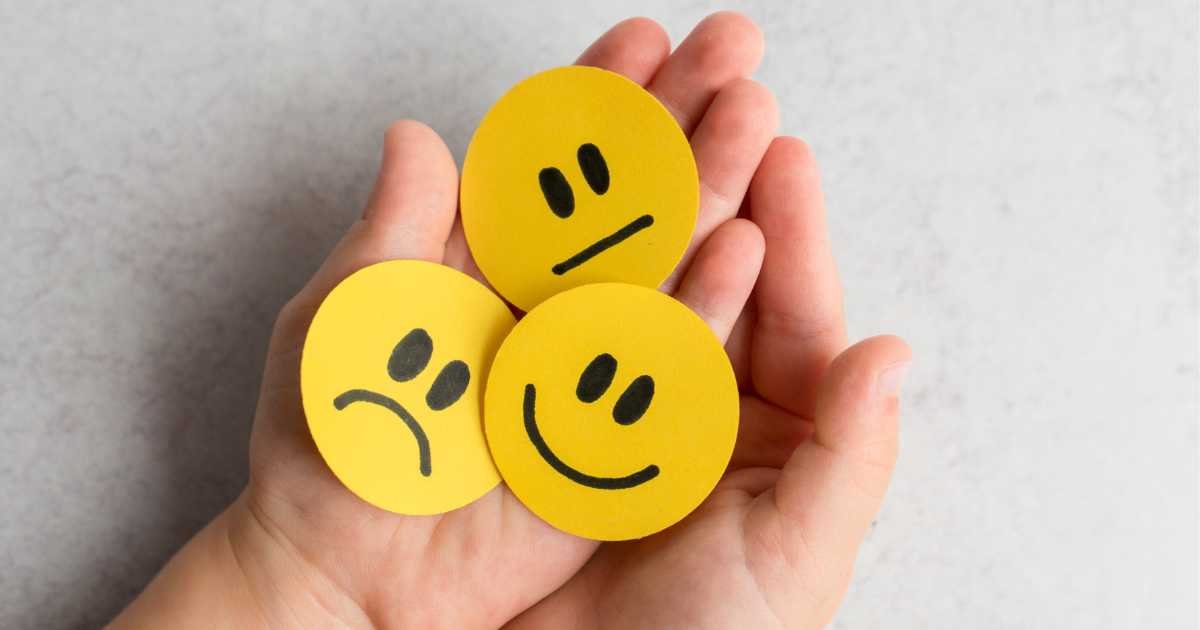When I started mountain biking, I had no idea about the mental benefits of mountain biking, like how it could calm my mind, make my mood fresh, etc.
I started it as a hobby and later thought it was another physical workout that burns calories and makes me stronger.
So let’s talk about how deeply mountain biking heals your mind if you do it the right way.
It Quietly Resets Your Mind

Every time I hit the trails, especially green or forest ones, where it’s hard to see anyone.
There I could clearly listen to my bike’s tires crunching over dirt, the rhythm of my breathing, and feel air brushing on my face.
This makes my brain finally exhale.
Once you try this, you’ll also stop thinking about everything that’s been looping in your head — work, stress, or an argument.
Your attention will lock onto what’s right in front of you: a rock, a root, a bend.
That’s not just focus, it’s called flow state, and it’s one of the biggest mental benefits mountain biking gives you.
If you’ve never felt that deep mental silence, start with small, consistent rides.
Even 30 minutes of daily biking can completely shift your mood and anxiety levels. I explained that in detail here — What Happens If You Bike Every Day for 30 Minutes.
You get Mental Therapy Without Sitting Still

Most people try to meditate sitting on a mat, but their mind keeps jumping around.
For me, mountain biking is meditation in motion. Every pedal stroke syncs your breath, every corner demands focus, and every climb humbles your ego.
The forest does half the work.
If you ride through dense green or pine trails, you breathe in compounds called phytoncides — those natural chemicals trees release.
They lower stress hormones and clear your head.
The fresh air, sunlight, and constant motion work together better than any guided app.
And the best thing — you’re not trying to calm your mind; it just happens. That’s the secret difference between forced meditation and moving mindfulness.
If you’re starting later in life or getting back into biking after a long break, it’s worth reading Starting Mountain Bike at 40 – 10 Tips to Follow.
That post explains how to balance body recovery, expectations, and mindset — which all tie directly into mental health.
Your Brain’s Reward System Gets Fixed Naturally
When we talk about feeling better mentally, it’s really about how well your dopamine system works.
That’s your motivation and pleasure circuit.
Most people try to trigger it through screens, junk food, or quick hits of social media — but that’s the fake version.
Mountain biking resets this loop naturally.
When you take on a climb, push through it, and reach the top — your brain releases dopamine and serotonin. It’s earned satisfaction, not forced.
The small wins from every ride build confidence, discipline, and self-trust.
And if you’re aiming to build endurance both physically and mentally, check 9 Effective Ways to Build Stamina for Longer Mountain Bike Rides.
Because stamina isn’t just physical — it’s how long your focus and calm last, too.
Overcome Anxiety Through Motion

Anxiety lives in the mind when your body is still.
But when you ride, your body and mind have to sync; otherwise, you will lose control.
That sync destroys anxiety loops instantly.
Every twist, bump, and small challenge forces your brain to react, not worry.
So, you can’t overthink and balance your bike at the same time.
That’s why even short rides help — they interrupt mental spirals.
If you ever feel heavy mentally, don’t plan a big trail. Just grab your bike and go for a light 20-minute spin — even around your neighborhood.
It doesn’t need to be hardcore.
Movement is medicine, and biking gives the right kind of motion your mind craves.
Trail Teach You Emotional Control

I have always believed that trials mirror your life.
The way you handle a rough section, a steep descent, or a fall says a lot about how you handle stress and people, too.
When I started, I used to brake too hard before every downhill — afraid of falling.
But once I learned to trust my line and let the bike roll, I noticed something: I was becoming calmer off the bike, too. More patient. Less reactive.
That’s emotional regulation in disguise. You train it without even realizing.
And your pedal setup affects this mindset too.
There’s a big difference between feeling “in control” and “connected.”
If you still haven’t decided your side on that, read Clipless vs Flat Pedals – Which One Should You Really Choose.
The way you connect to your bike actually changes how confidently you flow — and that translates directly to mental calm.
Combine It With Other Mind-Calming Habits

Now here’s the part that really multiplies the mental benefits. Most people stop at “riding clears my head.” YES, it does.
But if you mix it with a few other simple habits, the effect compounds.
Meditation after the ride — Once you finish a ride, your body is tired, your mind quiet. That’s the perfect time to meditate for 5 minutes. You don’t even need a guide. Just sit, breathe, and notice how your thoughts have slowed down.
Yoga or Stretching — It releases leftover tension in your back and shoulders. When your body relaxes post-ride, your mood stays lighter for longer.
Trail Breathing Practice — Try matching breath with pedaling. Inhale for four strokes, exhale for four. It keeps your rhythm and anchors you in the moment.
Forest Breaks — Sometimes I just stop halfway through a trail, lean the bike against a tree, and sit in silence for a minute. No phone, no sound. It feels like your nervous system reboots completely.
Gratitude While Climbing — Sounds silly, but when you start feeling tired mid-climb, just think of one thing you’re grateful for. Gratitude paired with physical strain shifts your mindset from resistance to appreciation.
These combinations make your mental peace last way beyond the trail.
Riding Alone vs Riding With Others — Mental Balance

Most of the time, I love solo rides. That quiet thinking time is like therapy.
When you ride alone, your thoughts start untangling naturally.
You can process things that felt stuck before.
But too much solo time can make you overthink — that’s when riding with a few close friends actually helps.
The group energy adds laughter, lightness, and connection.
Where you share the climb, the crash, the recovery — and that social part is just as healing.
It’s the same reason therapy groups work.
Best Time to Ride MTB for Mental Benefits

If you ever noticed, some rides feel mentally cleaner than others. That’s not random — it’s timing.
The best time for mental clarity rides is early morning or golden hour evenings.
Early in the morning, your stress hormone (cortisol) is naturally high.
When you ride then, you’re burning it down before the day even starts. Even 30–45 minutes of fresh air and sunlight does wonders.
Your serotonin rises, and your brain basically gets reset before the noise of the day begins.
Evening rides work differently. They don’t energize — they help you decompress. The sunset, slower pace, and softer light tell your brain it’s safe to relax.
And if you can, choose forest or nature trails over city routes.
Forest trails release phytoncides, boost calm, and are way better for mental recovery. That’s why I prefer green, shaded trails instead of busy open ones.
What Happens After The Ride
One thing I learned — the mental benefit doesn’t end when the ride ends. The afterglow matters too.
After riding, your body releases endorphins and serotonin — your brain stays in a relaxed but alert state for hours.
If you can, sit somewhere quiet right after, even if it’s just your car trunk near the trail.
Breathe, stretch, drink water.
That pause lets the calm “lock in.” If you rush straight to your phone or work, you’ll lose half the mtb mental benefit you just earned.
I also like to reflect briefly — not journal, not formal — just mentally note what moments felt best in that ride.
That reflection creates positive feedback, so your brain starts craving more of that peace instead of chaos.
Long-Term Mind Rewiring
If you ride regularly, the effect compounds. Your nervous system literally gets reprogrammed.
You start responding to stress differently because you’ve trained your body-mind system to recover faster.
Even when life throws you something messy, your brain now knows — go ride, breathe, reset. It’s automatic.
That’s the long-term mental rewiring mountain biking gives you.
Also, it doesn’t need fancy therapy words or mindfulness classes. It just needs you, your bike, and a trail that feels alive.
If you’re thinking, “Am I too old to start?” or “Is there a right age to begin?”, read What Is the Best Age to Start Mountain Biking.
It clears that doubt instantly — and shows how mindset matters more than age when it comes to both fitness and peace.
What to Remember of Biking for Mental Benefits
- Ride early morning if you want a calm, focused day.
- Ride evenings if you want stress recovery.
- Forest > city routes, always.
- Don’t ride with a noisy mind — take 1 minute before starting to breathe and reset intention.
- Combine biking with small rituals — breathwork, gratitude, silence.
- Don’t chase performance; chase peace. The performance will follow anyway.
When you mix these small things — right time, right trail, right mindset — mountain biking becomes more than a workout. It becomes therapy that doesn’t feel like therapy.
Conclusion
The mental benefits of mountain biking go way beyond just clearing your head for a bit.
It’s not some quick dopamine fix; it’s a full mental reset system that builds you piece by piece.
Every trail teaches you something — patience, control, breathing, rhythm, or just how to slow down your own noise.
Mountain biking doesn’t “add” peace into your life; it removes the clutter that blocks it.
Once you feel that first proper post-ride silence in your mind, you’ll understand why so many riders call it therapy without realizing it.
FAQs
Let’s discuss some questions real quick now.
How long should I ride to feel mental benefits?
You don’t need to ride for hours. Even 30 to 45 minutes of consistent riding can shift your mood and focus for the entire day.
The key is regularity — not duration. Daily or 3–4 times a week is enough to rewire your brain’s stress patterns.
Is solo riding better for mental health than group rides?
Both will work but differently. If you ride solo, it will give you reflection, quiet, and emotional clarity.
Group rides give you connection, laughter, and shared energy.
Mixing both — solo during the week, group on weekends — gives the perfect balance for mental wellness.
How can I maximize the peace I get from mountain biking?
You should ride a bike in the early morning, and choose forest trails. Plus, before riding, avoid any distractions, and combine your ride with breathing or gratitude practices.
Don’t rush after finishing. Find a quiet place, sit there for a few minutes. Let your body and mind process the calm.
If you want deeper physical and mental stamina, you can also check 9 Effective Ways to Build Stamina for Longer Mountain Bike Rides.

Ali is the founder of Mountain Bike Insider and an passionate rider with years of hands-on experience in mountain biking. From testing gear to exploring trails, Ali writes based on real riding knowledge to help others make smart, safe, and enjoyable biking choices. Every guide is built on research, personal use, and a passion for the sport.







